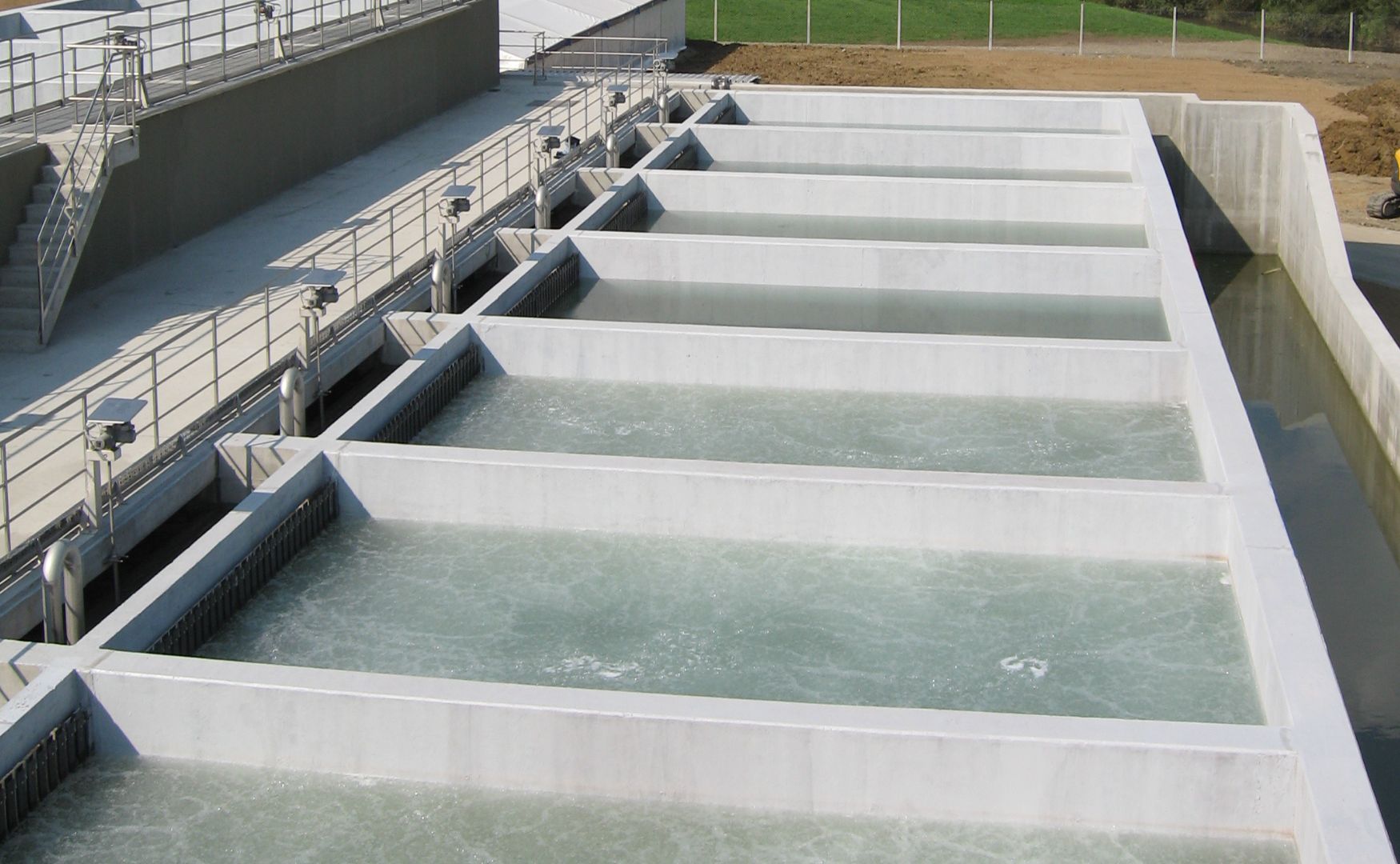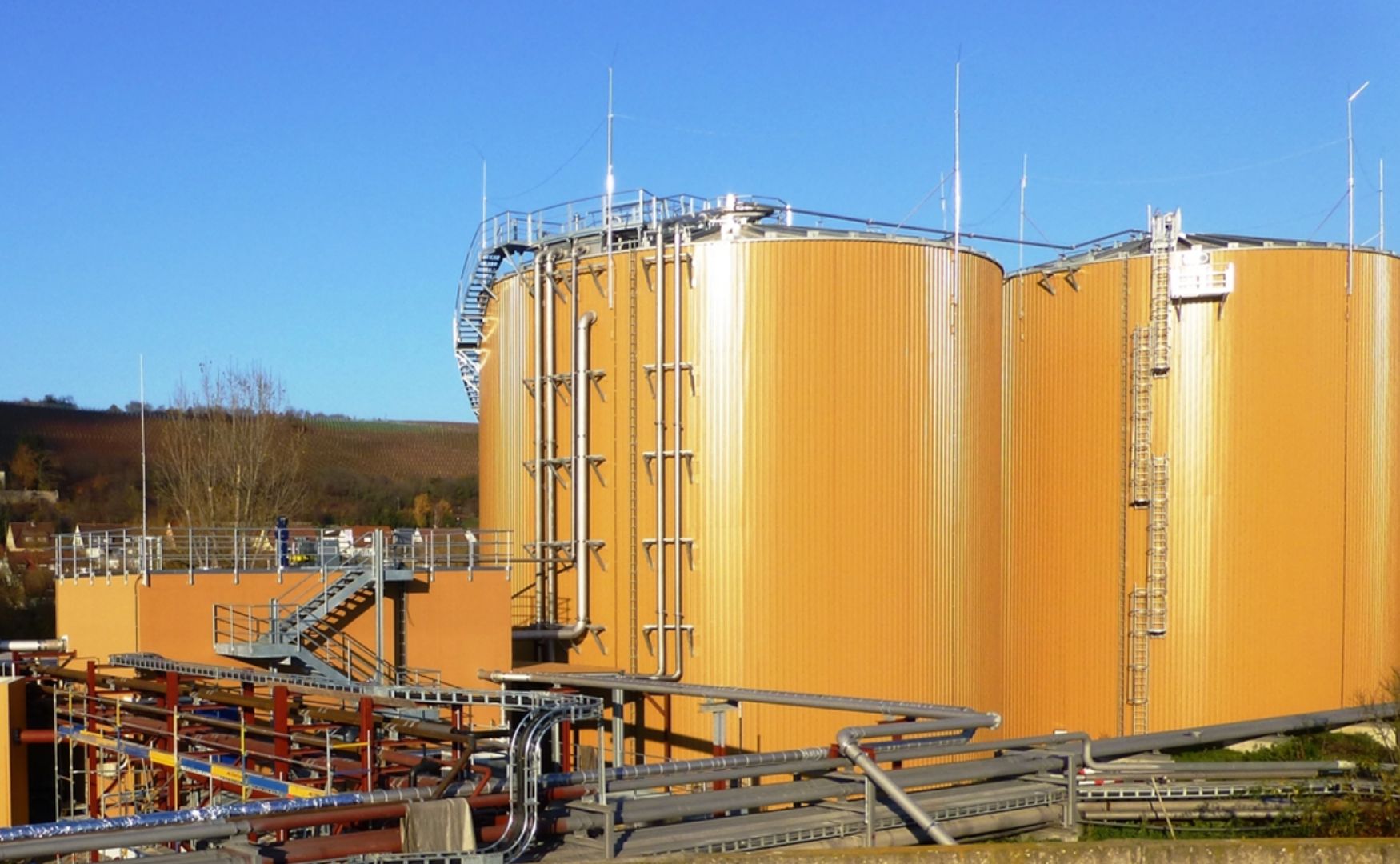Ammonification is a biological process in which organically bound nitrogen in the form of proteins, amino acids or nucleic acids is converted into ammonia (NH₃) or ammonium (NH₄⁺) through the decomposition of organic material. This process is a central component of the nitrogen cycle in nature and plays an important role in industrial wastewater treatment, particularly in the biological purification of wastewater with a high organic nitrogen content, as is often the case in the food industry, chemical industry and agriculture.
Table of contents
Technical background
Ammonification is carried out by a variety of microorganisms such as bacteria and fungi that occur in aerobic and anaerobic conditions. The process begins when these microorganisms break down organic nitrogen compounds such as proteins and urea. During degradation, the organically bound nitrogen is converted into ammonia or ammonium by enzymes, depending on the environmental conditions, especially pH and temperature.
Ammonia (NH₃) and ammonium (NH₄⁺) are in an equilibrium that is strongly dependent on the pH value:
- Bei neutralen oder sauren Bedingungen (pH < 7) liegt Stickstoff hauptsächlich als Ammonium (NH₄⁺) vor.
- Under alkaline conditions (pH > 7), ammonium converts into gaseous ammonia (NH₃).
Application in practice
Ammonification is an essential step in biological wastewater treatment, as it represents the first part of nitrogen degradation. The ammonia or ammonium formed by ammonification is further converted in subsequent biological treatment processes such as nitrification and denitrification in order to remove nitrogen compounds from the wastewater and ensure compliance with limit values for nitrogen emissions.
Typical areas of application in industrial wastewater treatment include
1. municipal and industrial wastewater treatment plants
Ammonification is the first step in nitrogen degradation, in which organic nitrogen compounds from the wastewater are biologically degraded. It takes place in the activated sludge tanks or in special anaerobic or aerobic reactors.

Photo: Denitrification and nitrification basin for industrial wastewater from the food industry in Chile, ALMA BHU BIO plant
2. aerobic reactors
In aerobic biological wastewater treatment plants, such as the activated sludge process or Moving Bed Biofilm Reactor (MBBR), ammonification takes place in parallel with the decomposition of organic substances. Microorganisms convert the organic nitrogen into ammonium, which is then made available for subsequent nitrification.

Photo: Photo of our biologically activated filtration, a combination process of mechanical cleaning and biodegradation(ALMA BHU BAF)
3. anaerobic treatment plants
In anaerobic biogas plants, which are often used to treat highly organic wastewater or sludge from the food industry and agriculture, ammonification is an important process for converting organic nitrogen into ammonia, which is then treated further down the nitrogen cycle.

Photo: Example of an anaerobic reactor for the production of biogas from wastewater(ALMA BHU GMR)
Relevance for wastewater treatment
In industrial wastewater treatment, ammonification is crucial in order to provide nitrogen compounds in a form that can be further broken down in subsequent biological processes. The ammonium nitrogen released by ammonification is oxidized to nitrite (NO₂-) and finally to nitrate (NO₃-) in the next step of nitrification. In the subsequent denitrification process, nitrate is further reduced under anaerobic conditions to nitrogen gas (N₂), which escapes into the atmosphere.
Influencing factors
The ammonification process is influenced by various operating conditions:
- Temperature: Ammonification is a temperature-dependent reaction. Higher temperatures (between 20-35°C) promote the activity of the microorganisms, while lower temperatures slow down the decomposition process.
- pH value: A slightly alkaline pH value supports the conversion of ammonium to ammonia, which can be crucial in wastewater treatment, especially in processes such as ammonia stripping.
- Oxygen availability: Although ammonification can take place under both aerobic and anaerobic conditions, it is often more efficient in anaerobic processes such as biogas plants, as the microorganisms are better adapted to the decomposition of organic material in low-oxygen environments.
- C/N ratio: The ratio of carbon to nitrogen (C/N ratio) in wastewater has a significant influence on ammonification. A balanced C/N ratio promotes microbial decomposition and thus the conversion of organic nitrogen into ammonium.
Advantages and disadvantages of ammonification in wastewater treatment
Advantages:
- Essential process in nitrogen degradation: Ammonification is the basis for subsequent nitrification and denitrification, which is crucial for the removal of nitrogen from wastewater.
- Efficient decomposition of organic substances: The conversion of organic nitrogen into ammonia/ammonium through ammonification enables the biological decomposition of nitrogen compounds in municipal and industrial wastewater treatment plants.
Disadvantages:
- Formation of ammonia: Under certain conditions, ammonification can lead to the formation of ammonia, which in higher concentrations is toxic to aquatic organisms and in some cases requires additional gas treatment processes such as ammonia stripping.
- Odor nuisance: The release of ammonia gas can lead to odor problems, especially in open treatment basins or in poorly ventilated facilities.
Conclusion
Ammonification is a central biological process in industrial wastewater treatment that enables the breakdown of organic nitrogen to ammonium. It forms the basis for subsequent processes such as nitrification and denitrification, which lead to the complete removal of nitrogen from the wastewater. By controlling the temperature, pH value and oxygen availability, ammonification can be optimized to ensure effective nitrogen elimination and meet wastewater discharge requirements.







